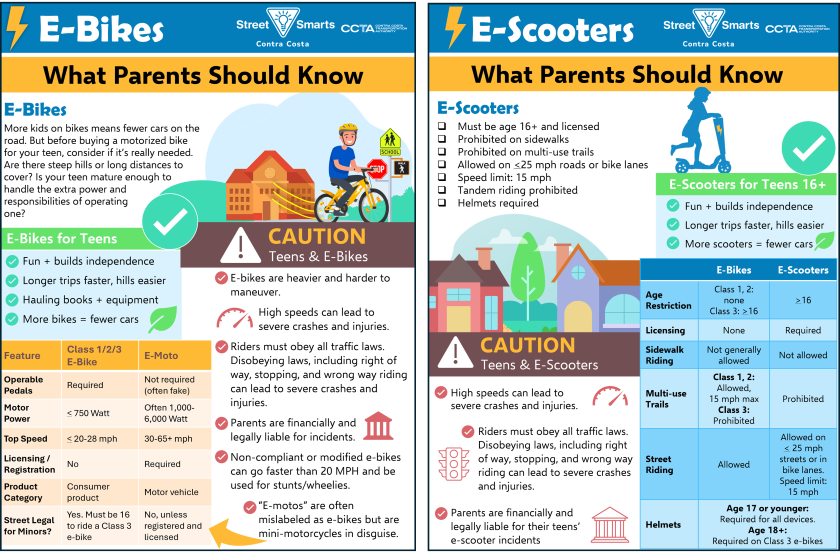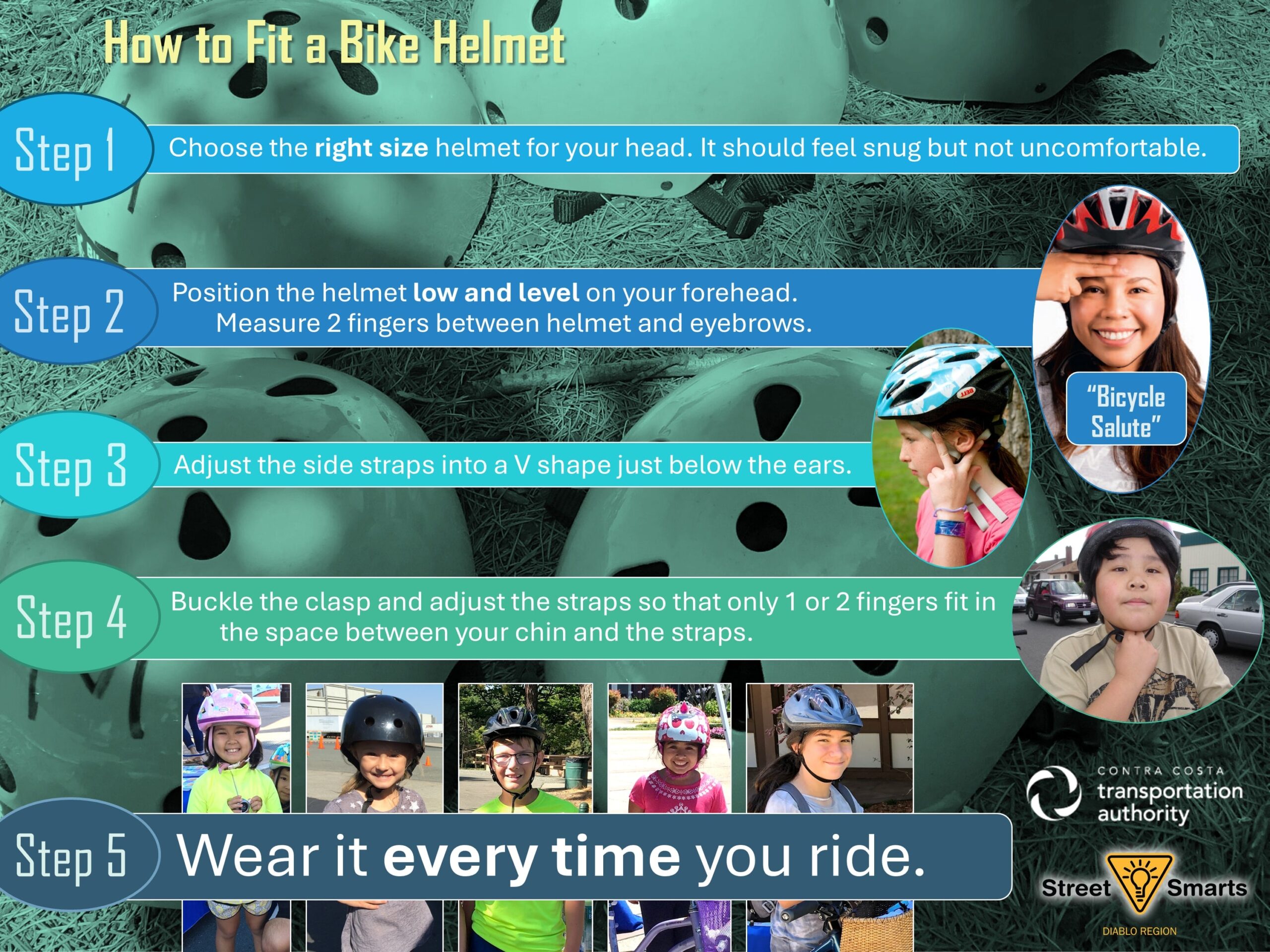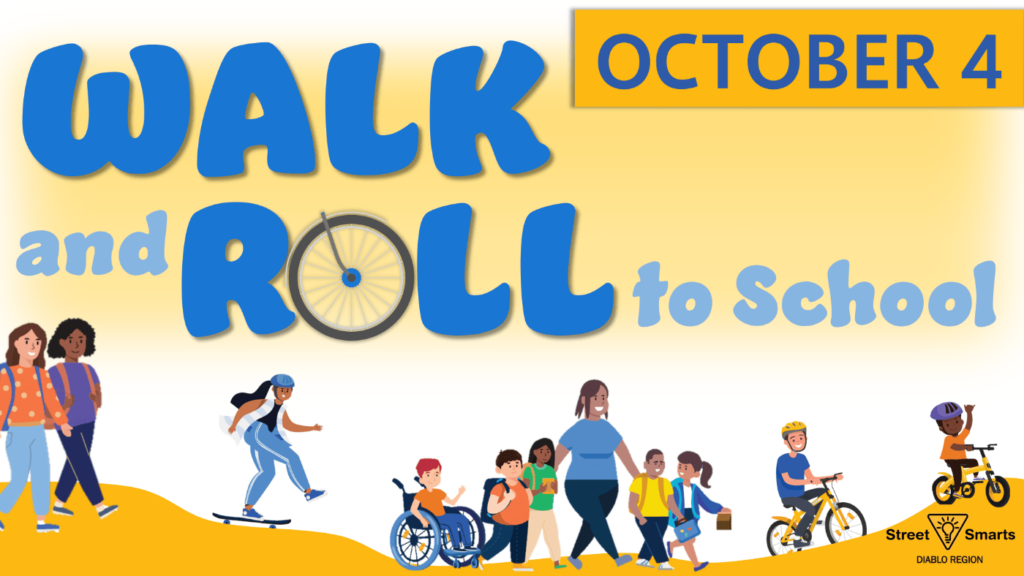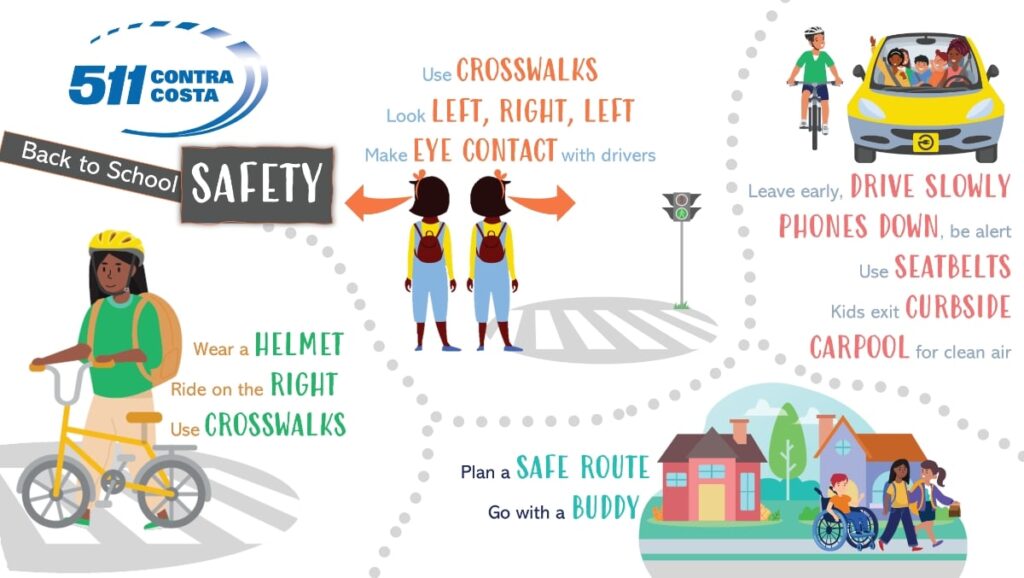What Parents Should Know About E-Bikes and E-Scooters

Should I Get My Child an E-Scooter?
If you’re looking to score big points by giving your child an electric scooter, be aware that California state law requires a driver’s license to operate an e-scooter. This means children younger than 16 cannot legally ride one. More:
- Helmets are mandatory for electric scooter riders under the age of 18.
- E-scooters cannot be ridden on sidewalks or multi-use trails.
- The speed limit for scooters in bike lanes is 15 mph.
- Riding tandem, with a buddy, is not allowed.
- E-scooter riders must follow all the same rules of the road as drivers.
What About Getting an E-Bike for My Child?
For now, no law prohibits minors from riding Class 1 and Class 2 e-bikes (those with maximum assist speeds of 20 mph). To operate a Class 3 e-bike, which can provide assisted speeds of up to 28 mph, riders must be at least 16 years of age, although a driver’s license is not required. Parents are advised to assess their child’s cycling skills and to consider their levels of experience and maturity before purchasing them an e-bike. More:
- Children under the age of 18 are required to wear a bike helmet on any type of bike/e-bike, scooter, skateboard, or roller skates. (Adults are also legally required to wear a helmet on Class 3 bikes.)
- In most cases, riding any type of bike on sidewalks (including e-bikes) is less safe than riding in the bike lane. Sidewalk riding is not permitted in most places.
- The speed limit on multi-use trails for all bikes is 15 mph.
- Parents: Be aware that many Class 2 e-bikes can be easily modified after purchase to go faster than 20 mph, allowing tech-savvy kids to travel at speeds unsafe for their level of experience.
- E-bikes are heavier and harder to maneuver than traditional bicycles; it takes longer to stop them at higher speeds.
If you plan to get your child an e-bike or e-scooter, a parent (or experienced adult cyclist) is advised to ride with them to teach and demonstrate the rules of the road and safe riding techniques. If your young rider cannot maintain control, rides unpredictably, or has trouble handling their new wheels in various types of conditions, it may be too soon for them to graduate from their traditional, non-motorized bike or scooter.



